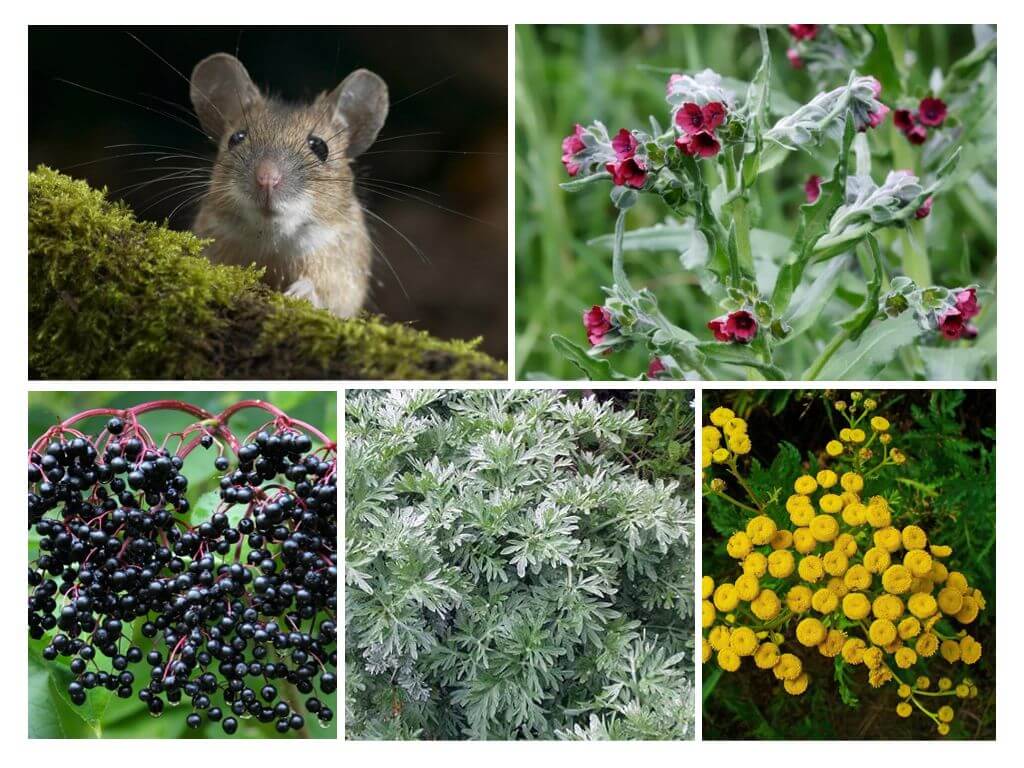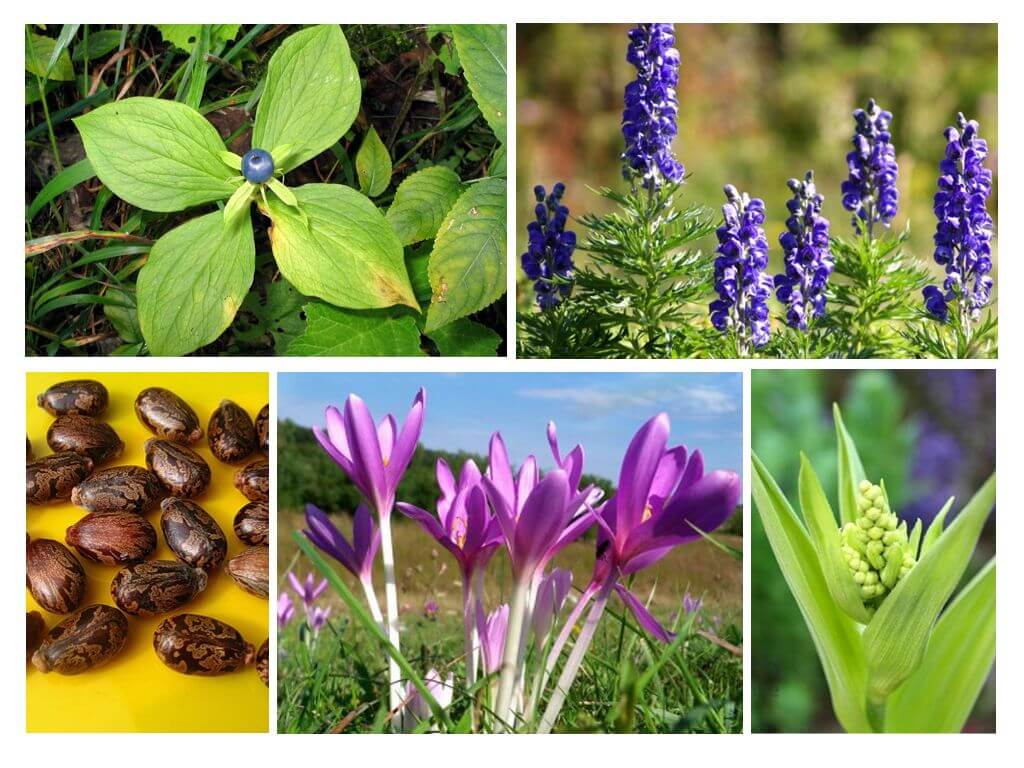Grass from mice
Content
- Repellent plants
- Plants ratids
The use of herbs in the fight against various pests is an environmentally friendly method, because it does not harm either humans or pets. If you know what kind of grass do not like mice, then you can successfully apply such methods to scare away rodents who have settled in an apartment, in a country house or in a garden.
The use of herbs for rodent control is one of the most peaceful folk remedies for mice. They are 2 types:
- ratids - varieties of plants, some parts of which (roots, seeds, leaves), are successfully used for the preparation of poison, after eating which, the mice die;
- repellents - plants that scare mice off with their smell; they are used to drive pests away from the house or garden.
Repellent Plants
The following plants belong to repellents.
Chernokoreny (ratman)
Used for years in the dry and fresh state for rodent control (see photo). As the poison with the added bait used powder from its roots, seeds, as well as the juice of the plant or a sufficiently strong decoction of the roots. Freshly sown grass of a black-crested or rat worm with its smell quite effectively frightens off mice and rats. And its people almost do not feel the aroma, therefore black root you can even lay out in the house: put on the shelves with food, in the basement, in the attic, to get rid of small pests.
To protect the garden, it is enough to plant 20-25 ratsogon plants on the site, preferably near fruit-bearing trees, a house and a shed where rodents can live.This grass frightens off mice, and they are also terrified of the seeds of this plant, which can cling to thorns on their wool.
On a note!
In order to drive the mice out of the holes, dried grass poured with boiling water is put in there, often a rat wagon is placed in hay so that the mice do not build nests there.
Elder from mice
The grass has a not very pleasant smell, which effectively scares off rodents. Black elderberry roots contain prussic acid, which is very poisonous to animals and people. Such properties of the plant were known in antiquity. The villagers always planted red and black elderberry bushes in their gardens and gardens to scare away pests, and cut branches laid out in cellars and other places of food storage.
Sagebrush
Applying wormwood from mice and rats used to be a popular way to protect the crop from pests: they took dried bundles of wormwood, which emit a bitter smell, put bread in sheaves, tied the trunks of fruit bearing trees, and in the house weed the grass closer to shelves with food and in the cellar.
Tansy
Grass smelling camphor is a tansy that has been famous for many years as a natural insecticide that helps in the fight against various insects: mosquitoes, flies, and fleas.Tansy from mice can also be used successfully: by bundling several stems with flowers in bundles, it can be decomposed in the house and in the basements to scare off the smell of mice.
Chamomile
The grass that people love for the pleasant smell, but cannot stand the rodents - chamomile from mice can be used in dried form, its bundles together with flowers are often placed in economic rooms to protect the products of caring housewives.
Rosemary
The plant is an assistant that scares away not only insects - the wild rosemary of mice helps if its branches are laid out in the corners of the rooms and near the mouse holes. It is often used for shifting clothes in the wardrobe to scare away the mole.
Wild mint
Grass from mice will help scare them not only in the house to preserve food supplies, but also planted in the garden and in the garden. Wild mint is dried and used in bundles to scare away rodents.
There are also bulbous varieties of plants that are recommended for repelling pests in the garden. So, the bulbs of daffodils, sometimes with coriander, spread on the beds of root crops, slightly mulching.Daffodils, planted around the flowerbeds with tulips, are able to protect the flower garden from voles, they can be planted in the fall to create a hedge.
There are also some types of garden crops that are not tolerated by mice - these are solanaceous (potatoes, tomatoes), onions, planting legumes.
Ratida plants
One of the methods of rodent control is the use of poisonous poison mixed with food bait for mice. As a poison, you can use plants against mice, most often their roots are used. Here are some common recipes.
Raven eye
The ground roots of the raven eye of the 4-leaf are used as a poison: 5 g of powder should be mixed with sunflower seeds (100 g) as bait.
Aconite
Another toxic root of aconite antidote is widely used to harm mice and rats mixed with any food bait: the powder is made from tubers (50 g) and mixed with 1 kg of cereals or other food.
Hellebore
The tincture of the freshly dug roots of the hellebore Lobel is done as follows: 100 g of roots pour 200 g of warm water and draw for 4-5 days, dropping 2-3 drops of hydrochloric acid there.The resulting infusion is mixed with grain and left to swell. Poisoned grain laid out in places of vital activity of mice for their destruction.
On a note!
The hellebore’s roots are also used to protect trees from rodents in the winter. To do this, they are ground to powder and mixed with clay or lime before coating tree trunks in autumn.
Clapboard
Milled castor seeds used for the manufacture of poison for mice with vegetable oil.
Thermopsis
Seed thermopsis lanceolate in ground form is used to poison mice, adding them to the mixture with bread. The plant produces a very unpleasant odor, which is also used to scare rodents away from trees. To do this, around the trunks make grooves with sawdust, soaked with tincture of thermopsis.
Important!
When cooking all poison baits with poisonous herbs, caution should be exercised, because many of them are poisonous not only for mice, but also for humans. Gloves should always be used due to the possibility of burns with poisonous juice.
Autumn autumn crocus
Another poisonous herb from which you can make bait for rodents is autumn autumn crocus. To do this, use seeds (20 g), which is added to 1 kg of flour.Thoroughly mixed, ready poison in small portions put in favorite places frequented by mice. Also autumn crocus can grow along the southern edge of the vegetable garden to protect plantings.
Other herbs can also be used to poison mice: common dope, very poisonous to humans and animals, black bleached, etc.
From the above we can conclude that fight against mice on garden plots and in private homes able to help not only chemicals or mouse cells. Many species of poisonous plants are afraid of the mouse, because they are repelled by a strong smell.
Reviews
For several years now I have been successfully using wormwood at my dacha to take the mice out of the cellar. I spread it everywhere to drive away rodents, it smells very nice and scares mice.
Marina, Petersburg
I have a flower bed voles I nibbled all the tulips, did not touch only those that grew next to daffodils, so that next year, I will plant all the flower beds with them.
Galina, Kiev









